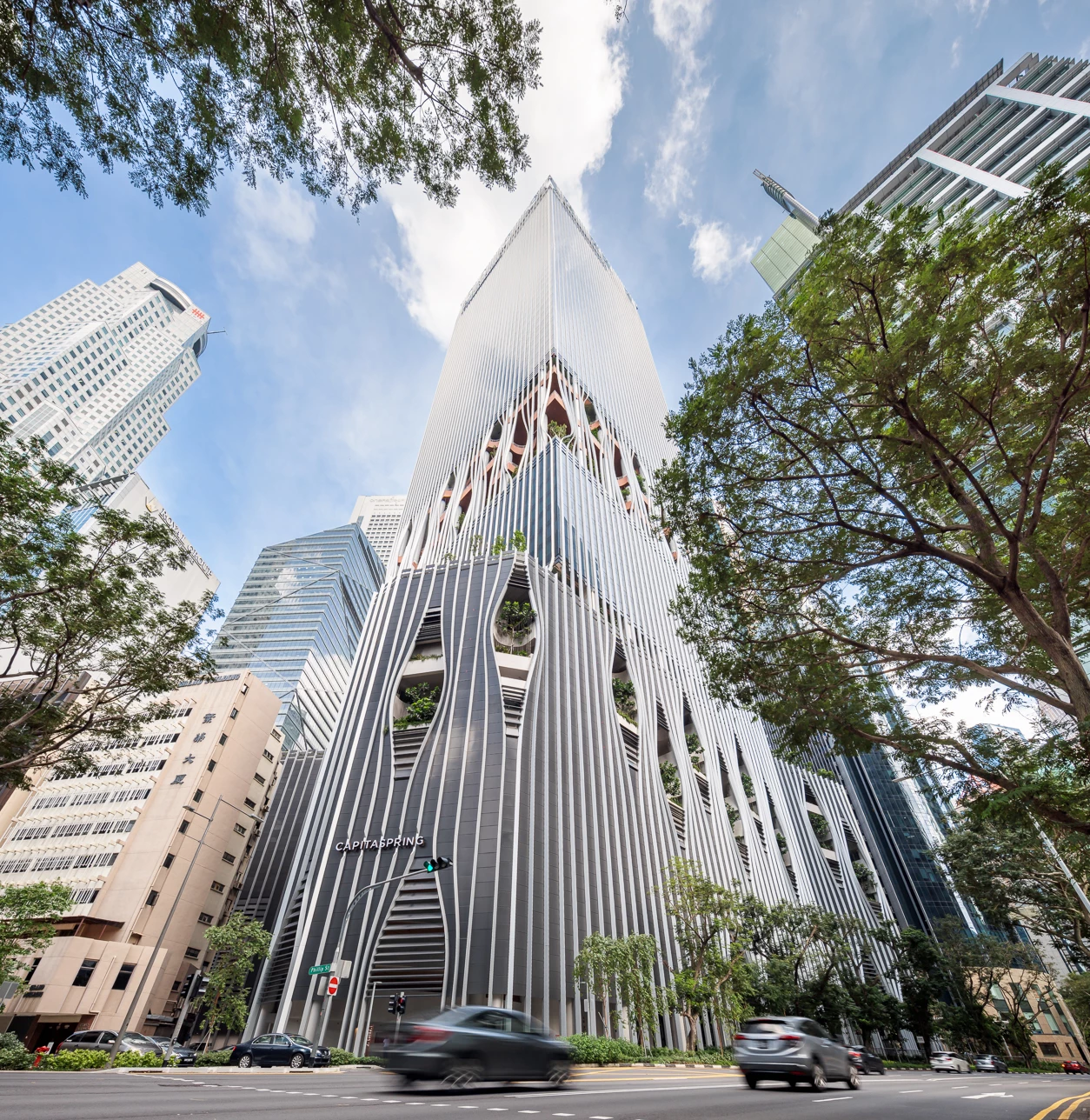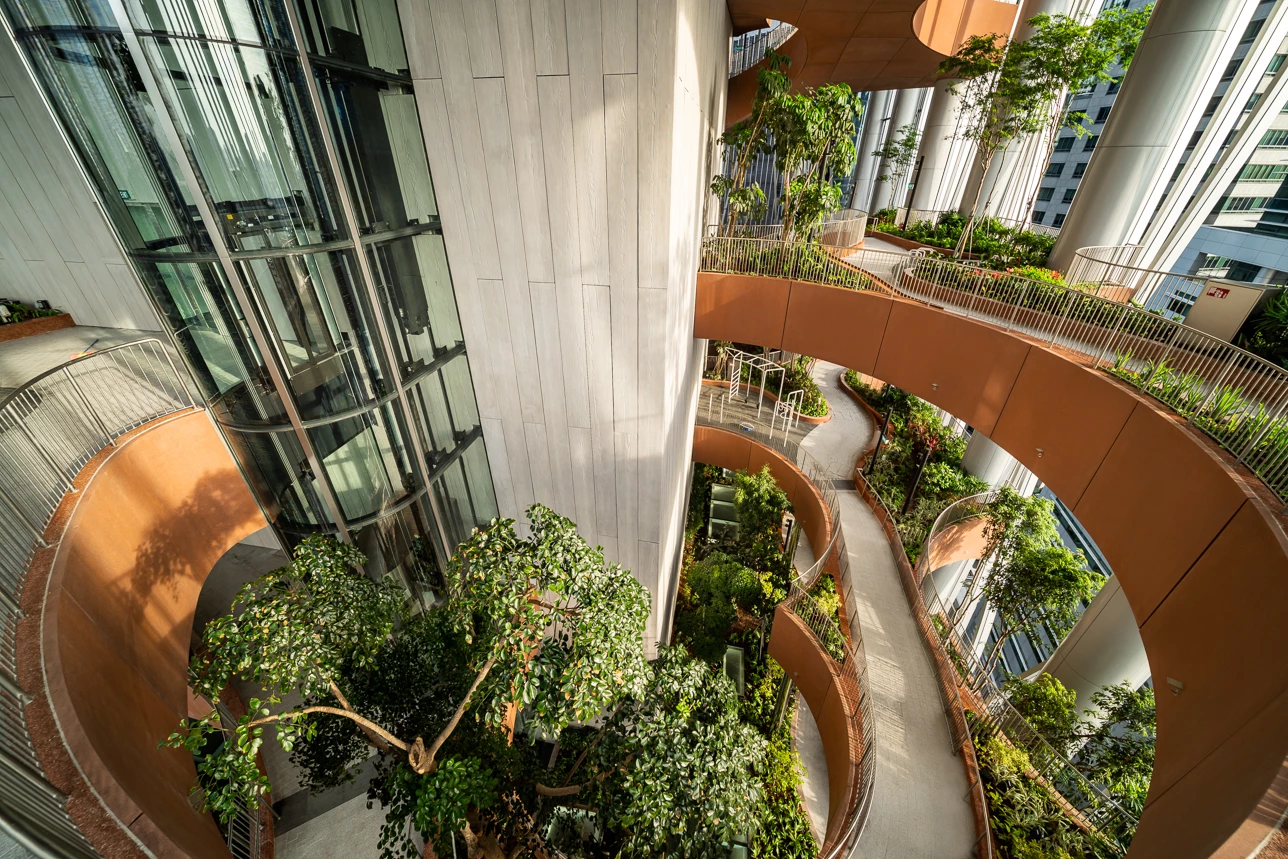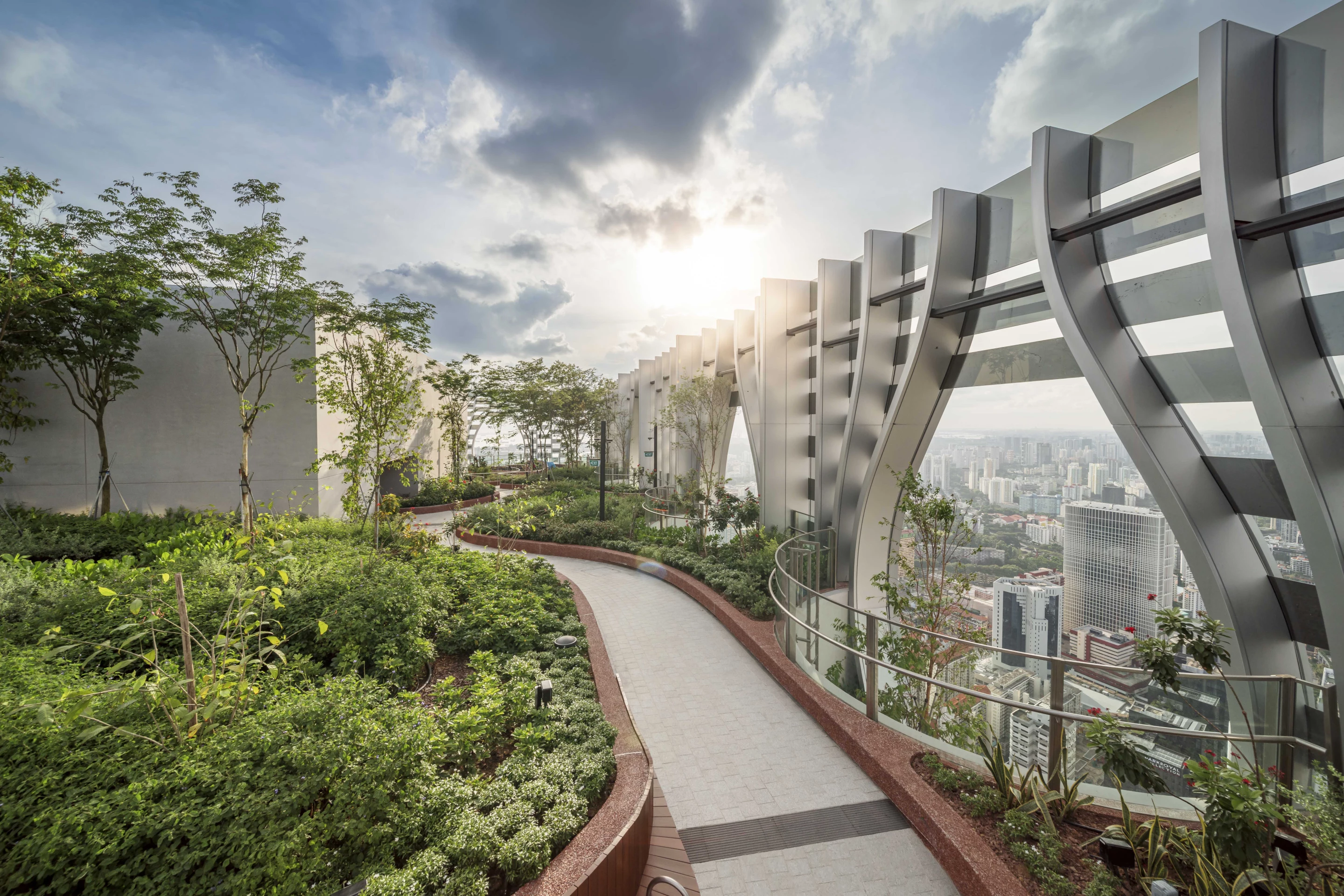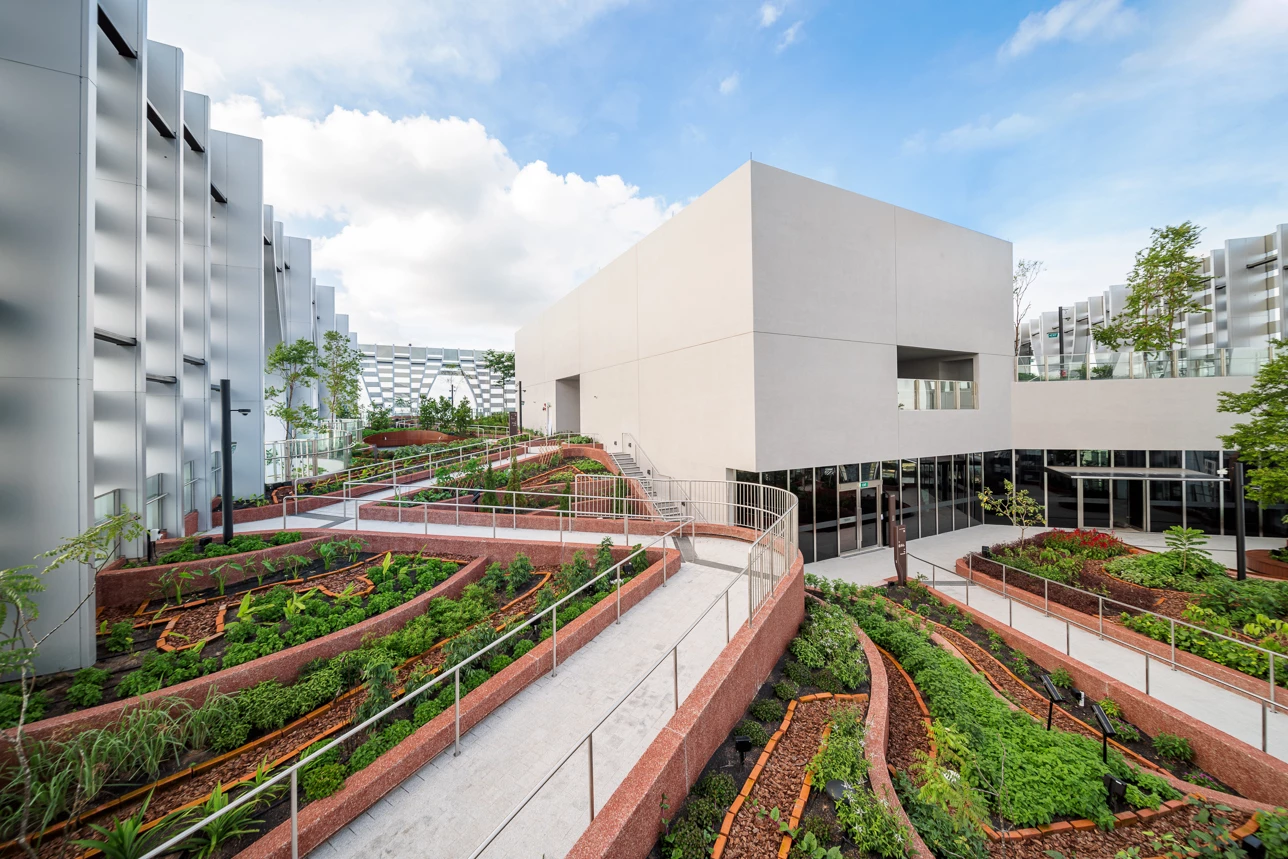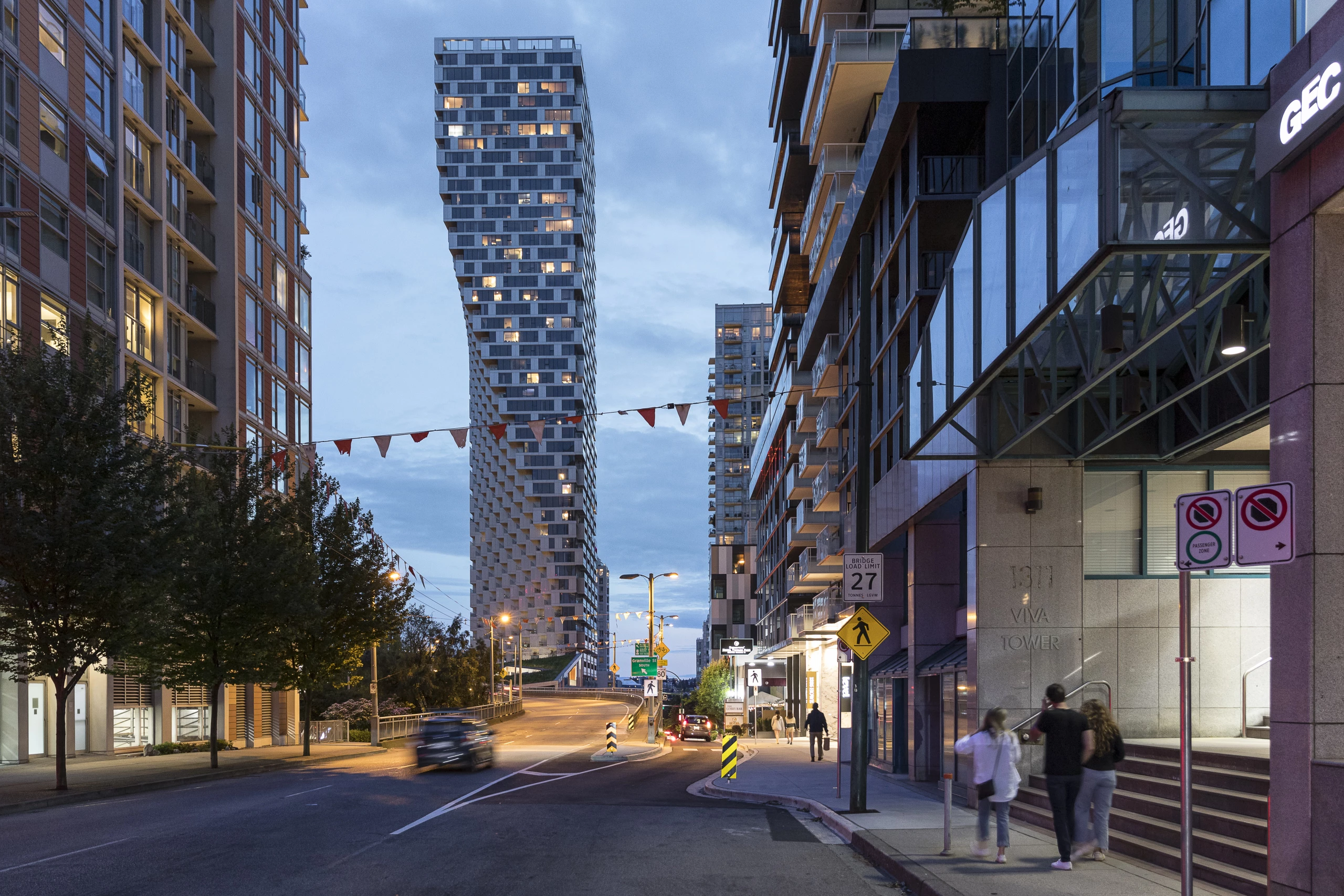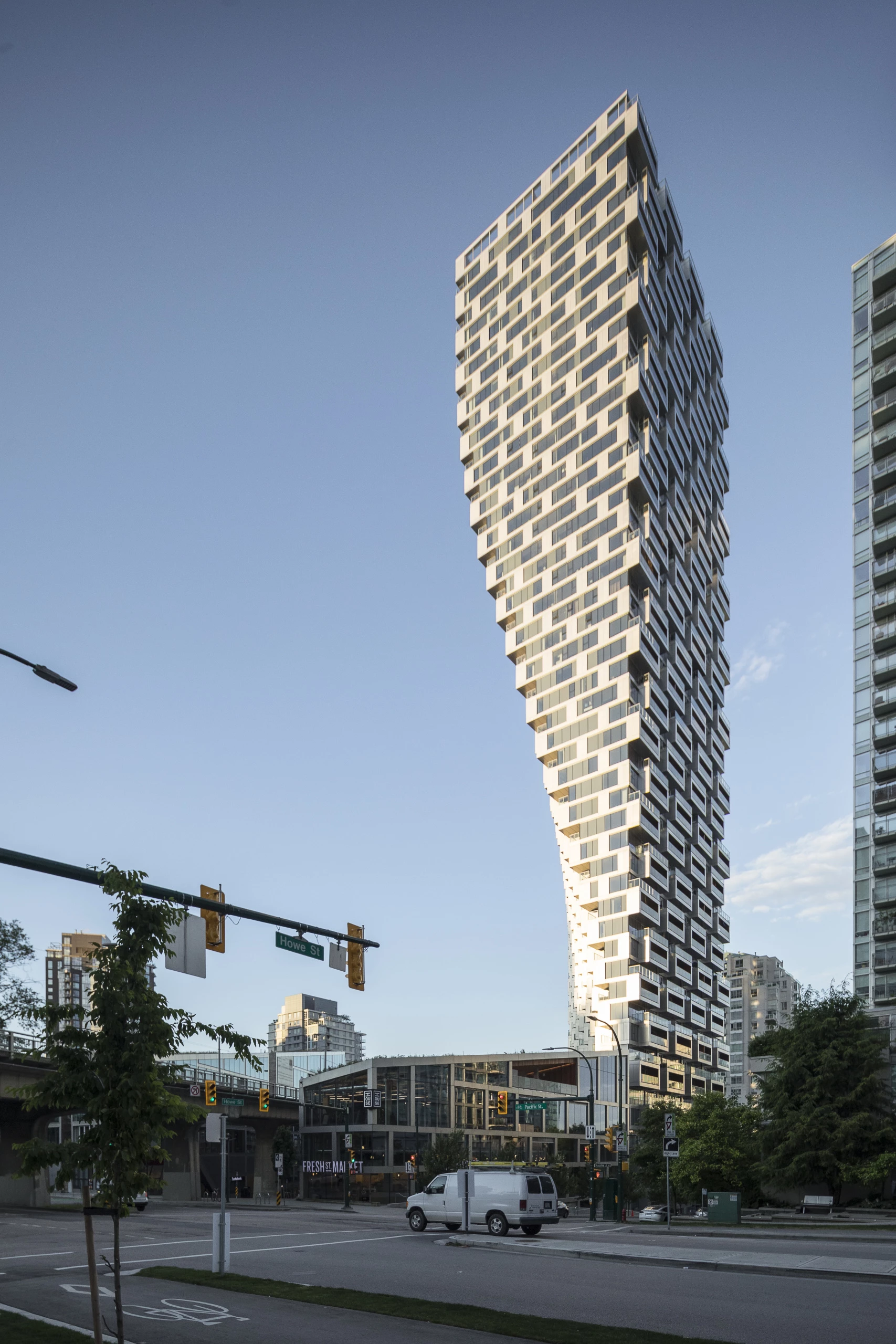This year has produced a bumper crop of excellent architecture projects and with 2023 fast approaching, we've decided to take a look back at some of our favorites. From a sand-dune-shaped building that rises out of the desert, to the world's tallest timber skyscraper, here's our selection of the best buildings of the past 12 months.
Our pick of the 10 best buildings of 2022 features projects that represent lots of different styles and types that we've featured during the year.
Two major themes dominate though: timber and greenery – reflecting the huge increase in architects embracing the benefits of using sustainably sourced wood and plants and trees in their projects. However, there are also other examples of outstanding architecture, including superb uses of concrete and a sympathetic restoration of an architectural icon.
Our selection is presented in no particular order, and you can also head to the gallery to see more photos and information on each.
New Library, Magdalene College in Cambridge – Níall McLaughlin Architects
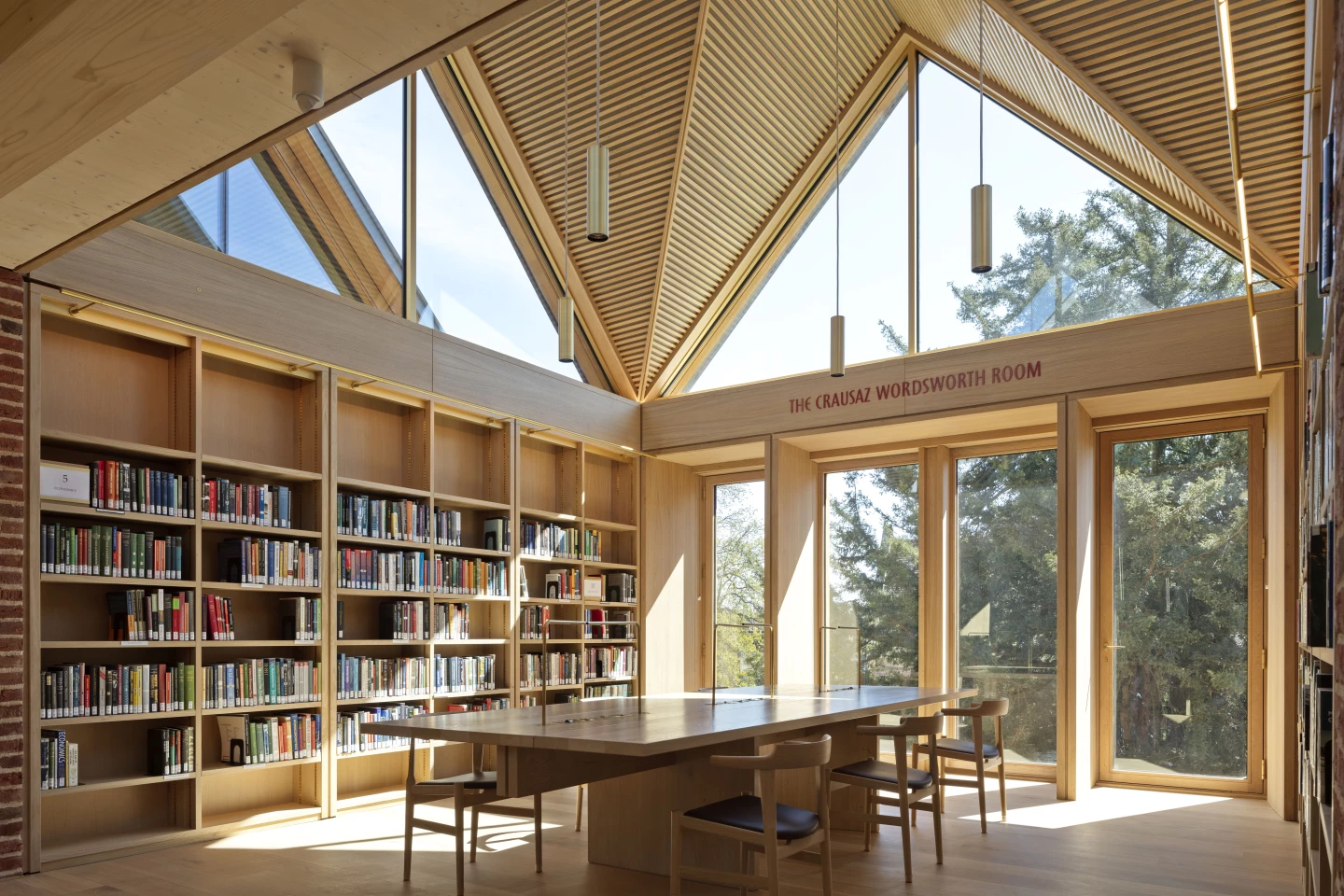
The recent winner of the UK's top architecture award, the Stirling Prize, the New Library, Magdalene College in Cambridge, England, combines gorgeous timber design and remarkable longevity – the building is expected to last at least 400 years.
Designed by Níall McLaughlin Architects, it was constructed using brick and cross-laminated timber (CLT) beams, and maximizes the natural light inside with multiple skylights. Additionally, its carefully positioned ventilating chimneys create a stack effect to help cool the space naturally and ensure a comfortable place to read throughout.
CapitaSpring – BIG/CRA
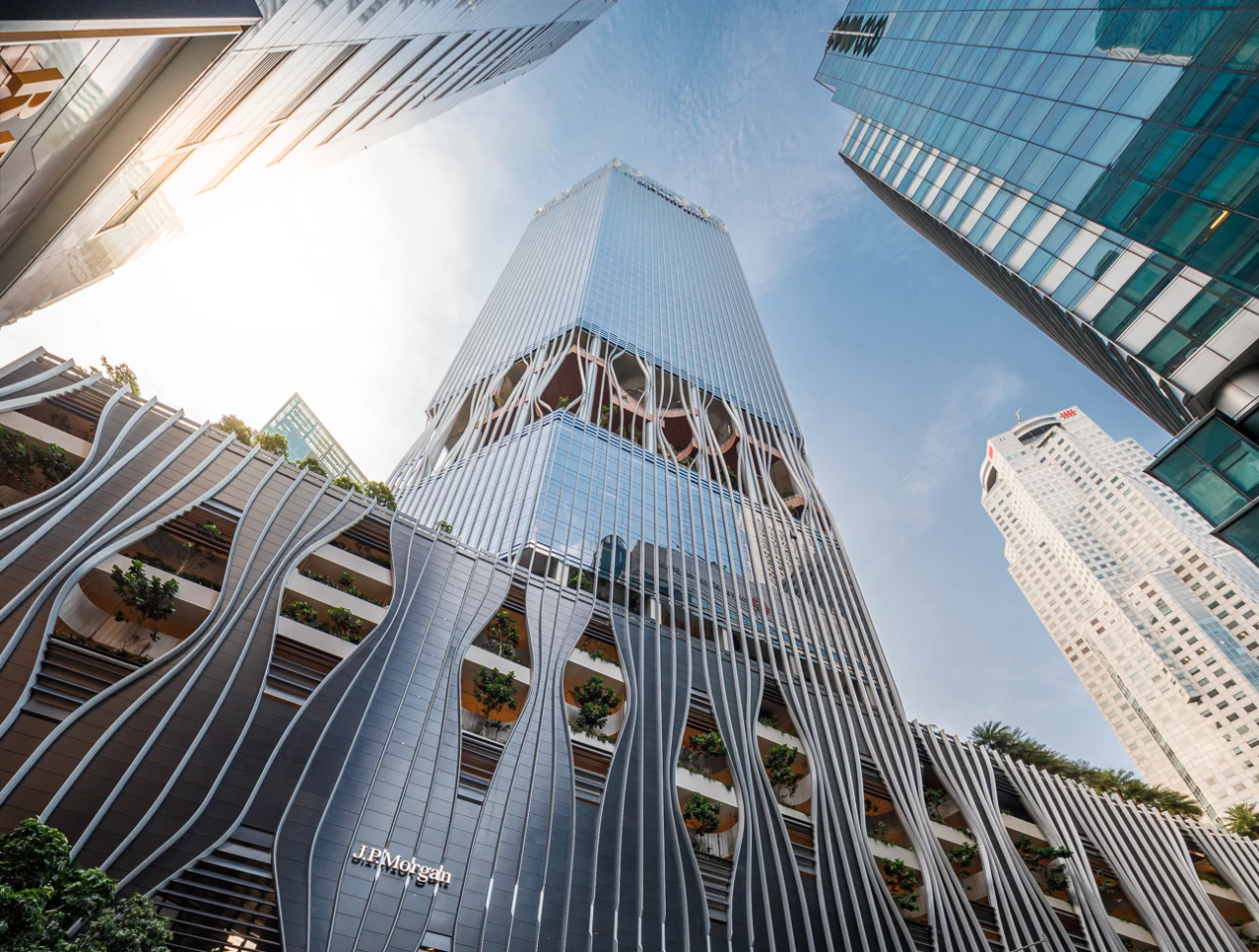
An intriguing collaboration between the developer of horizontal skyscrapers CapitaLand with the Bjarke Ingels Group (BIG) and Carlo Ratti Associatti (CRA), CapitaSpring is a skyscraper that's literally bursting at the seams with greenery.
It rises to a height of 280 m (918 ft) over Singapore and is defined by an aluminum facade that reveals the large amount of lush greenery growing inside. Its 51 floors include offices and residences, plus a "Green Oasis" walkway open to the public that's filled with plants, a rooftop farm, and the city state's highest public observation point.
PAE Living Building – ZGF Architects

The PAE Living Building, by ZGF Architects, is another fine example of resilient timber design. The office building has been constructed mostly from wood and is designed to withstand severe earthquakes and to last for 500 years.
It's located in Portland, Oregon, on a former parking lot, and consists of sustainably sourced glued laminated timber and CLT, though there is some concrete too. The overall design pays homage to the local architecture in the city and it minimizes its grid-based energy use both passively and with green technology like solar panels.
Battersea Power Station – WilkinsonEyre
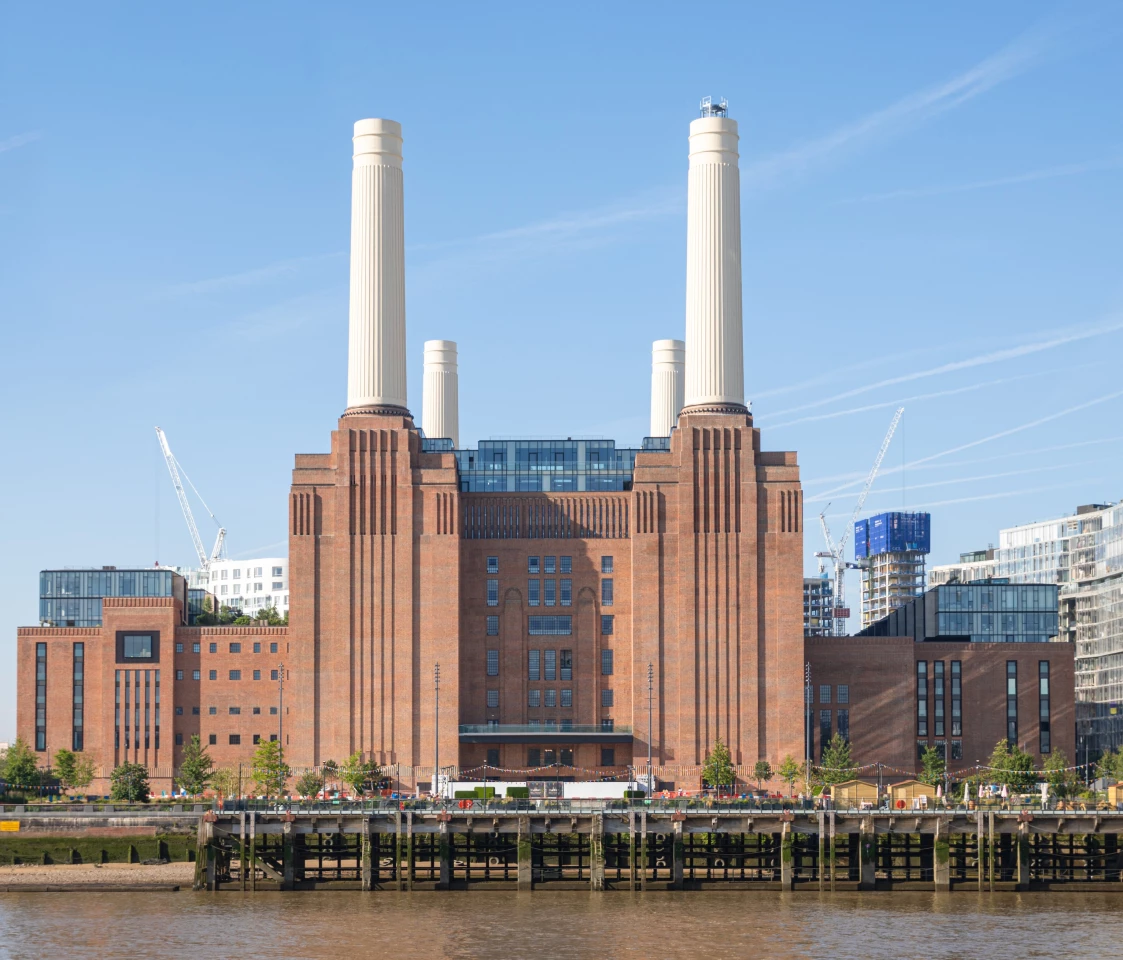
Almost 40 years after it was decommissioned, London's Battersea Power Station has finally been painstakingly restored by WilkinsonEyre, transforming the iconic Art Deco building into a mixed-use development that retains its original character.
Inside, its Turbine Halls have been transformed into retail areas, while its control rooms are now bars and event spaces. The gigantic Boiler Room, meanwhile, has been converted into an office space. Its chimneys were rebuilt using the original construction methods and one of them now hosts a novel glass elevator visitor experience.
SuperHub – De Zwarte Hond
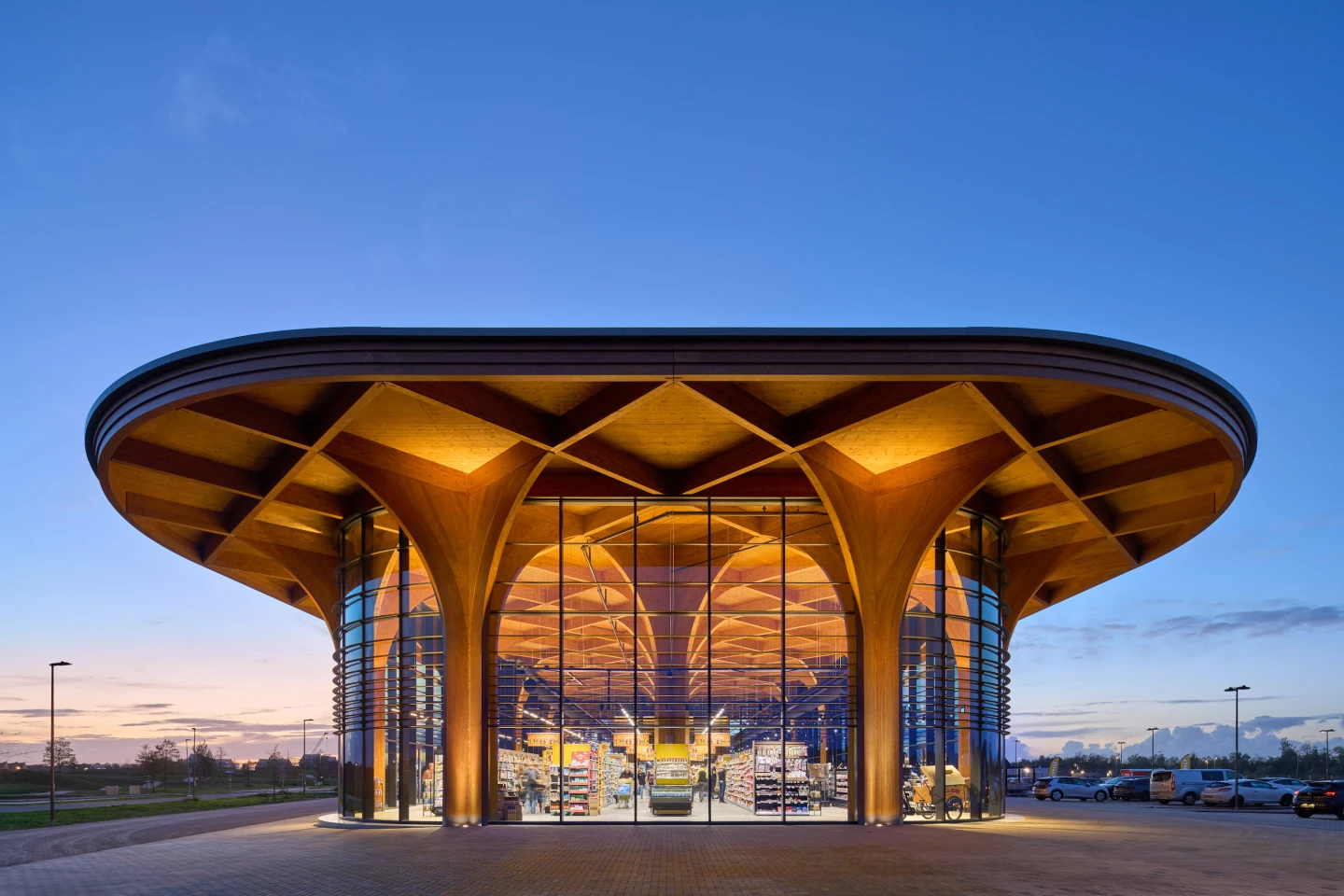
The SuperHub is a timber market hall that's topped by an eye-catching cathedral-like ceiling and hosts a flexible interior layout that should ensure continued use for decades to come.
Its supporting structure is made entirely of CLT columns and beams, creating an impressive 9-m (almost 30-ft) ceiling height. According to De Zwarte Hond, the structure is sufficiently stable to withstand local seismic activity, while the rooftop hosts solar panels to reduce its grid-based power needs.
Beeah Headquarters – Zaha Hadid Architects

Taking its place exceptionally well in the rugged desert, the Zaha Hadid-designed Beeah Headquarters is an energy efficient office located in Sharjah, United Arab Emirates.
The building is classic Hadid and is defined by a stunning curving glass-fiber-reinforced concrete exterior that's designed to reduce solar heat gain while blending in with the local landscape. It also helps keeps the interior at a comfortable temperature, alongside natural ventilation and shaded spaces.
It was partly built using recycled materials. An on-site water treatment system filters waste water, and all required power comes from a solar farm hooked up to Tesla battery packs.
Vancouver House – BIG
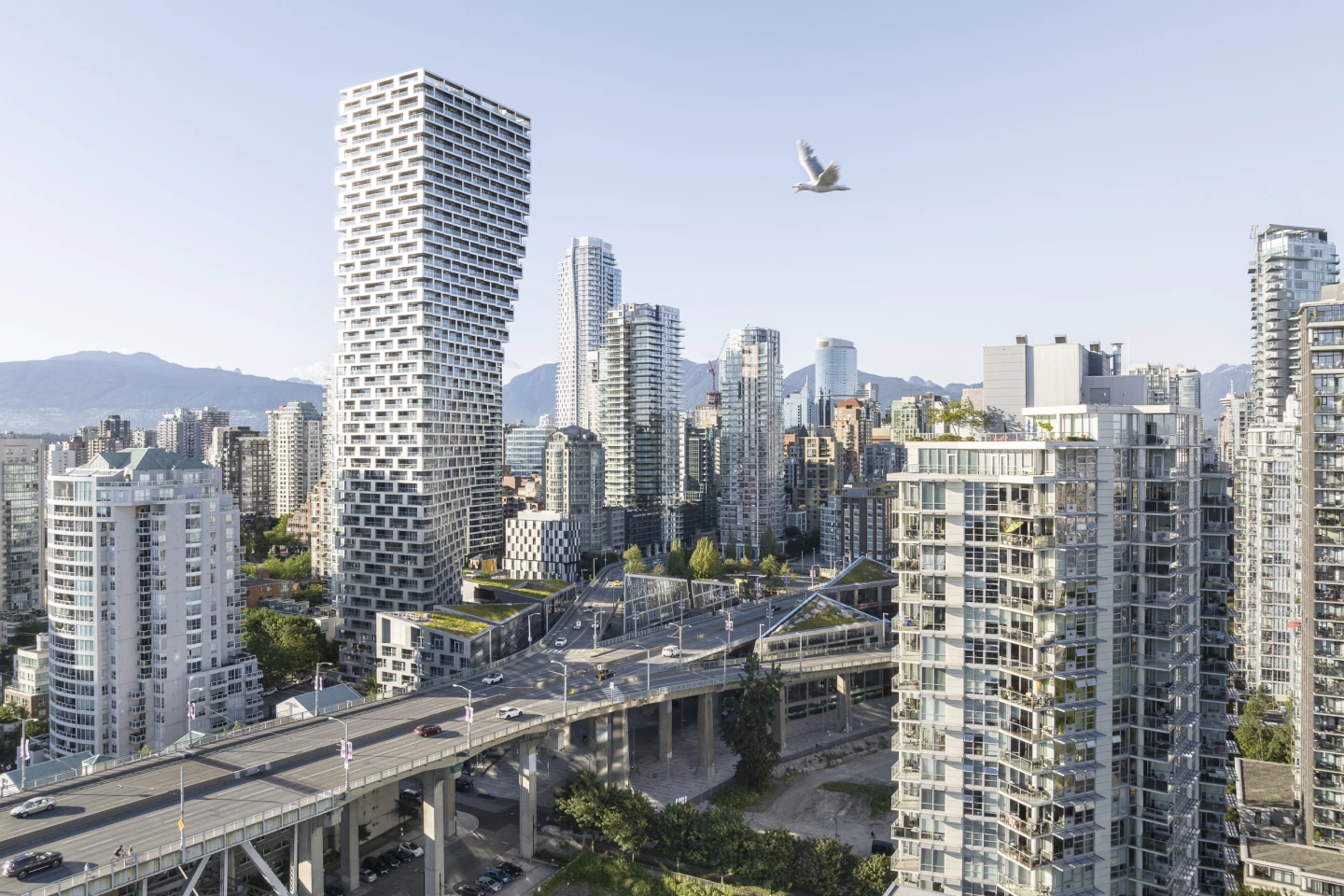
Another superlative skyscraper by BIG, Vancouver House has an incredible overall form that goes beyond being just interesting to look at. It actually came about as a response to a very challenging site that, according to the firm, was almost too small to build on.
Strict local planning laws require the tower to be no less than 30 m (98 ft) from the bridge until it reaches a height of 30 m (98 ft). In response, BIG sculpted the tower's form so that it rises out of the ground on a slim triangular podium and then twists and widens as it rises to a maximum height of 155 m (508 ft).
Museum of the Future – Killa Design

Included here for the sheer audacity of its design, Dubai's the Museum of the Future was created by Killa Design, in collaboration with engineers Buro Happold. The building takes the overall form of a big silvery eye and sports an intricate facade that's covered in Arabic calligraphy.
It's situated on top of a podium that's envisioned as a green hillside that consists of approximately 100 different drought-resistant local species of trees and plants. The museum building rises to a maximum height of 77 m (252 ft) and its stainless steel and glass exterior is adorned with inspirational quotes by the Prime Minister of the UAE and Ruler of Dubai.
The Ascent – Korb + Associates Architects

Located in Milwaukee, Wisconsin, Korb + Associates Architects' the Ascent is the world's new tallest timber skyscraper and reaches a maximum height of 86.6 m (284 ft).
It consists of 25 floors and hosts retail and amenity spaces on the lower floors, with 259 apartments above. Structurally, it's situated on top of five levels of concrete parking garages and concrete-filled steel pipe piles, and also has two concrete cores hosting the elevator shaft and stairwell. The tower proper is primarily constructed from glued laminated timber (glulam) beams and columns supporting its CLT floors.
Grand World Phu Quoc Welcome Center – VTN Architects
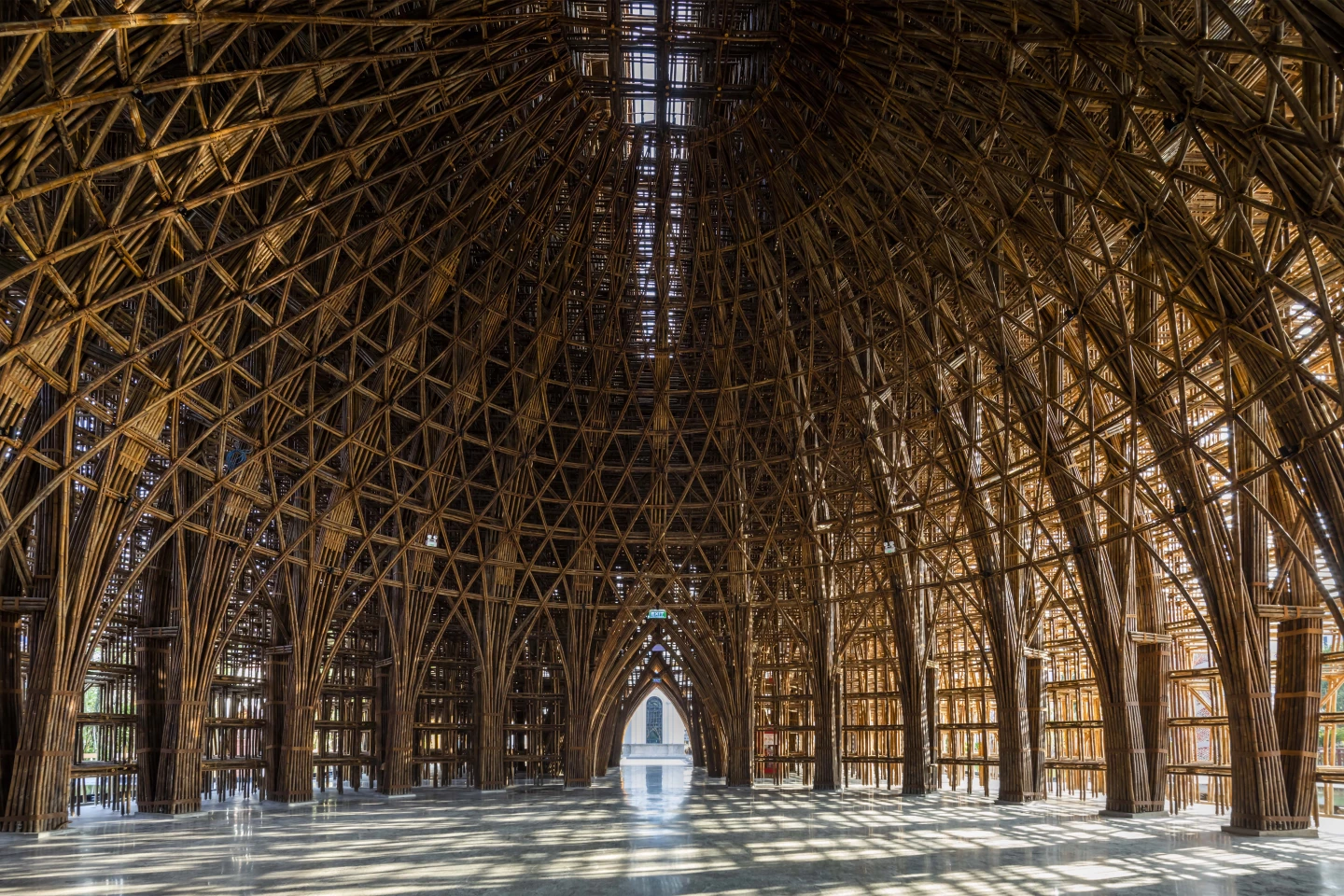
VTN Architects proves its mastery over bamboo with the Grand World Phu Quoc Welcome Center in Vietnam. The amazing building wows visitors with an intricate structure that's made from over 42,000 individual pieces of bamboo.
It reaches a total height of 14.8 meters (48.5 ft) and consists of a concrete base and a thatched roof, with a skylight installed to maximize natural light inside. The main structure is formed from many layers of modular sections of bamboo, which have been painstakingly joined together using ropes and pins.






